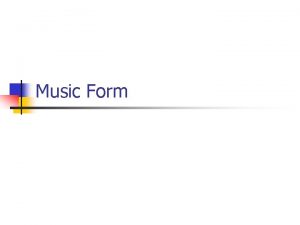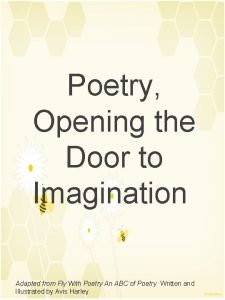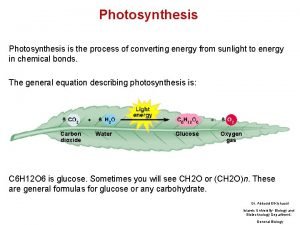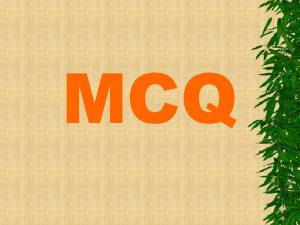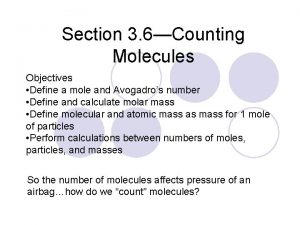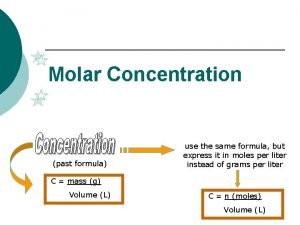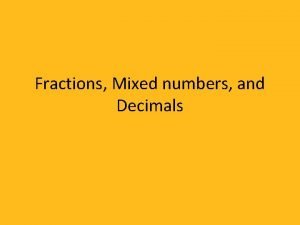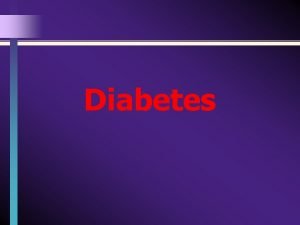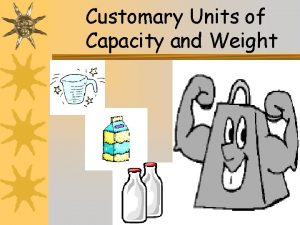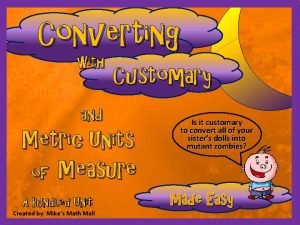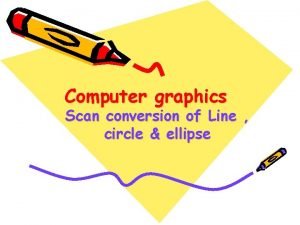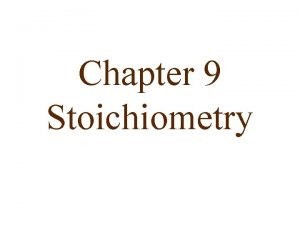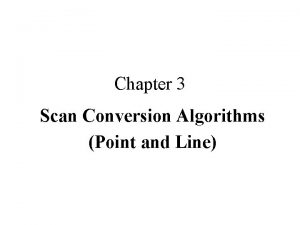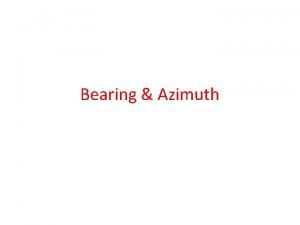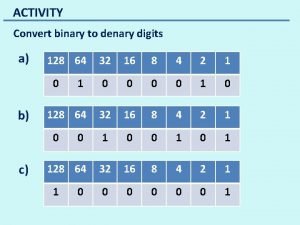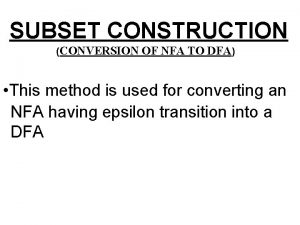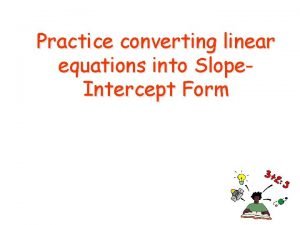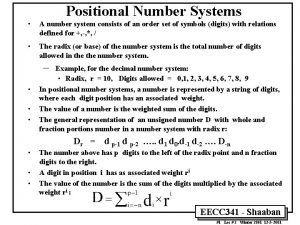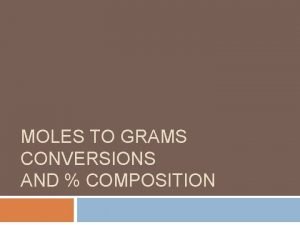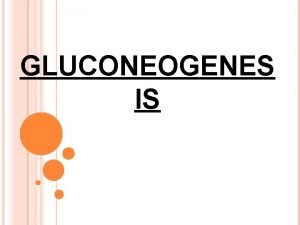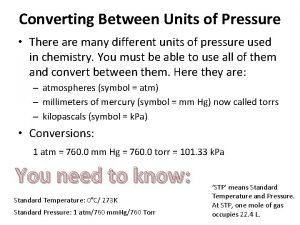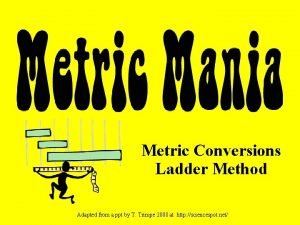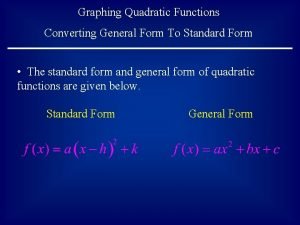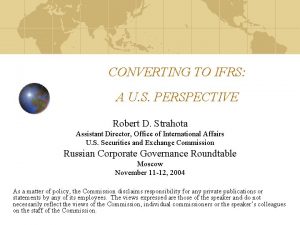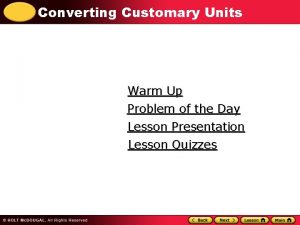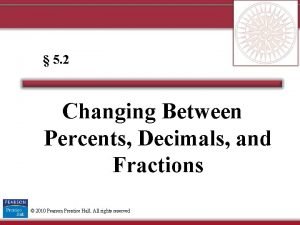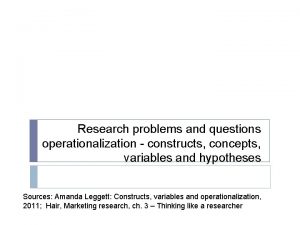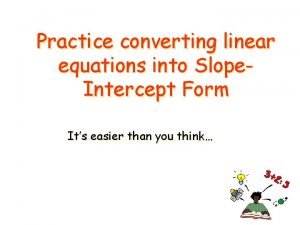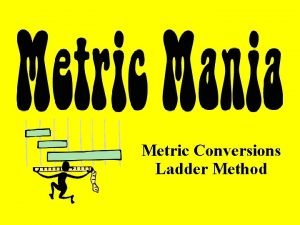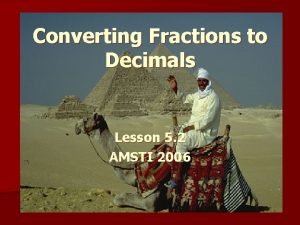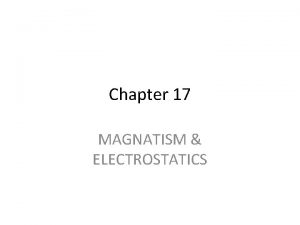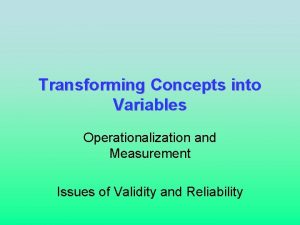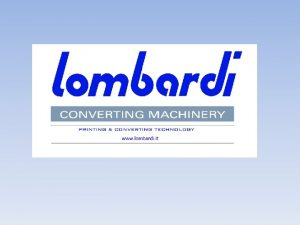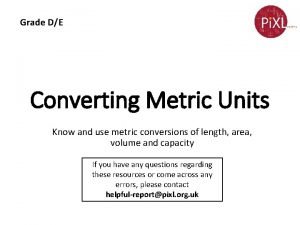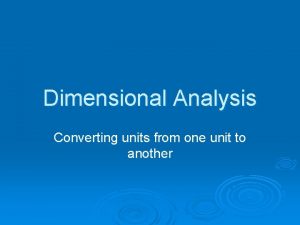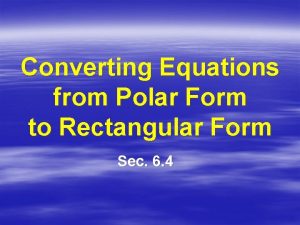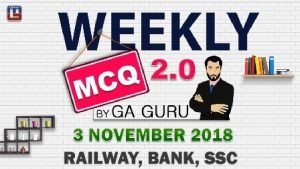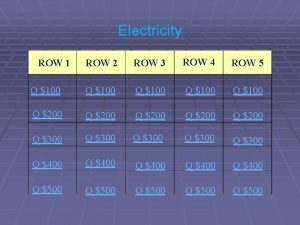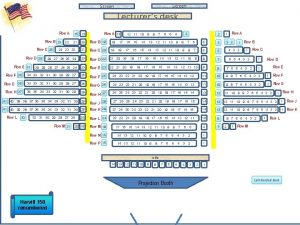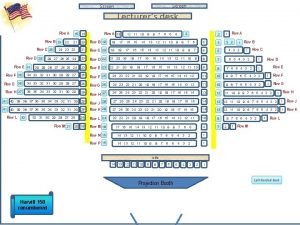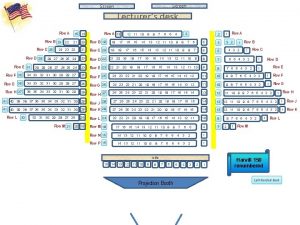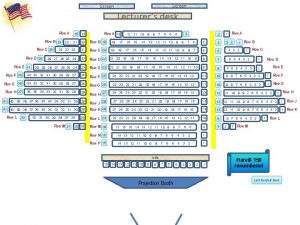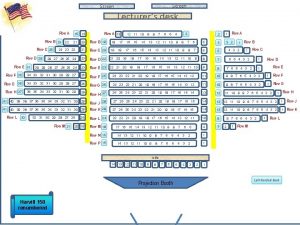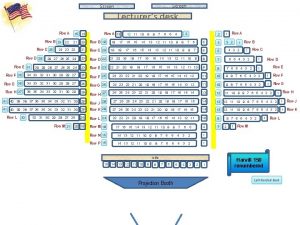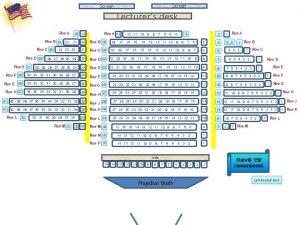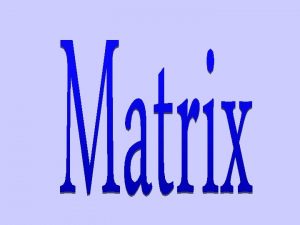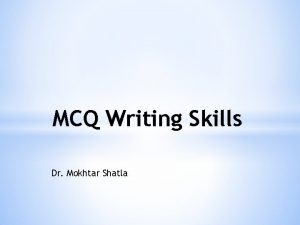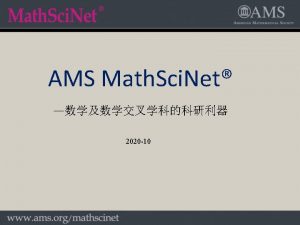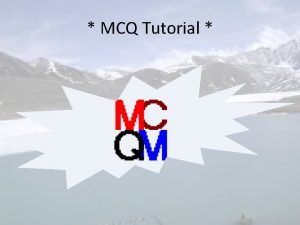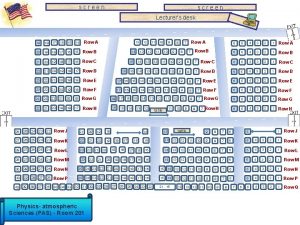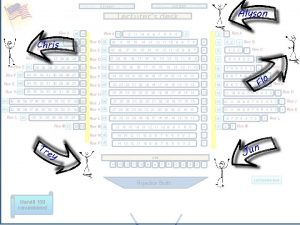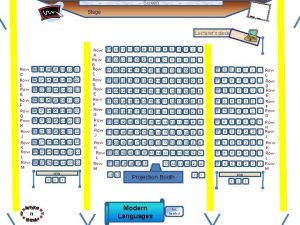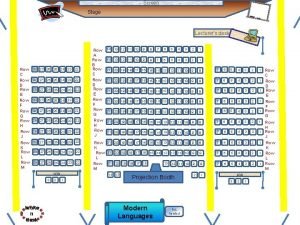MCQ 1 the process of converting of row








































































- Slides: 72

MCQ

1. the process of converting of row material in to finished product using machine is called as _____ a. b. c. d. Finishing process Metal cutting process Manufacturing process None of above

What is ‘Manufacturing’? Process of converting raw material in to finished goods, with the combination of 3 element i. e. MAN, MACHINE & MATERIAL. Ø MAN MACHINE MATERIAL MFG. PROCESS FINISHED GOODS

2. The process in which molten metal is poured in to the mould of desired shape is called as _____ a. b. c. d. Metal forming Metal forging Casting Injection moulding

Casting process

3. The following material is not suitable for casting process a. b. c. d. Aluminum Plastic Copper Alloy steel

4. The example of component manufactured by casting is a. b. c. d. Machine tool bed Nut Shaft Ball bearing

5. The following component can not be manufactured by casting process a. b. c. d. Flywheel Gears Engine cylinder Connecting rod

6. Following is not a metal forming process a. b. c. d. Forging Casting Rolling Drawing

7. The following is an example of metal cutting process a. b. c. d. Drilling Forging Grinding Extrusion

8. The example of surface finishing process is a. b. c. d. Grinding Shaping Rolling Both (a) & (b)

9. The mould is the _________ a. b. c. d. The component Obtained by pouring the molten metal Cavity which conforms the shape of component to be cast Border of casting None of above

The cavity which confirms the shape of the component to be manufactured & in to which molten metal is to be poured is called as the mould. 1. mould

10. In casting process the cavity is called as ______ a. b. c. d. Cast Pattern Mould Drag

10. In casting process the cavity is called as ______ mould 1. mould

11. The component of intricate shape can be easily manufactured by a. b. c. d. Forging Sheet metal working Casting Grinding

12. The blow holes & gas cavity are likely to be formed in component in following process a. b. c. d. Forging Casting Shaping Sheet metal working

13. I. C. engine blocks are manufactured by______ a. b. c. d. Forging Casting Shaping Both (a) & (b)

41. In casting process, the pattern is nothing but ________ a. b. c. d. A final component produced A mould made from a sand The replica of a casting, used for making the mould A design on the component

15. The following statement about casting process is correct a. b. c. d. The pattern is made by using mould The final cast component is converted to pattern by machining process The mould is made by using pattern The pattern is required only for complicated shapes for comparison

16. The following material cannot be used for making the pattern a. b. c. d. Wood Plastic Aluminum Sand

17. In casting process, the mould is commonly made from ______ a. b. c. d. Sand Cast iron Wood Plastic

18. Which of the following statement is incorrect ? a. b. c. d. Casting can produce component of high strength Casting can produce component of intricate shape Casting produce gas cavities & blow holes inside the component Aluminum component can be produced by casting process

19. In casting process, the holes or hollow spaces are obtained by using ____________ a. b. c. d. Drills Cores Moulds Cavities

20. The place where casting are made is known as ________ a. b. c. d. Furnace Foundry Forging shop Machine shop

21. The terms runner & riser are associated with a. b. c. d. Forging Machining Shaping Casting

22. The metal forming process can be carried out on metal, a. b. c. d. Only in hot condition In hot & cold condition Only in cold condition None of above

23. The following is not an example of metal forming process a. b. c. d. Bending Rolling Casting Extrusion

24. The place where forging component are made is known as ________ a. b. c. d. Furnace Foundry Blacksmith Machine shop

The place where forging component are made is known as Forging shop / black smith

25. The forging operation is performed under a. b. c. d. Breaking a range of material Elastic state of material plastic state of material Molten state of material

26. The forging process requires application of a. b. c. d. Tensile force Compressive force Shear force Constant force

27. The dies are used in a. b. c. d. Forging process Casting process Shaping process Both (a) & (b)

28. The material used forging process ___________ a. b. c. d. Must be the brittle material Must be the ductile material Can be ductile or brittle material Must be the ferrous material

29. The forging temperature is the temperature at which the material a. b. c. d. Melts Losses its plastic properties Losses its elastic properties Becomes red hot

30. The following material can not be used forging a. b. c. d. Stainless steel Aluminum alloy Copper alloy Cast iron

31. The following I. C. engine part can not be manufactured by forging a. b. c. d. Cylinder block Crank shaft Connecting rod Rocker arm

32. In a sheet metal work, die is a ___ a. b. c. d. Stationary part with cavity Moving part which enters in the cavity of desired shapes Piece of me

Ø Ø In sheet metal work the die is a Stationary part with cavity & punch is moving part without cavity

32. The cold forging of material is carried out at a temperature a. b. c. d. Below zero degree Celsius Below melting temperature Below recrystallisation temperature Below atmospheric temperatre

33. Following is the advantage of hot forging ; a. b. c. d. Better dimensional accuracy Reduction of strain hardening effect Increase in yield strength Both (a) & (b)

34. The cold forging gives a. b. c. d. High dimensional accuracy High ductility Reduction of strain-hardening effect All of above

35. In hot forging, the steel is heated to a temperature range of a. b. c. d. 100 -2000 C 300 -5000 C 1000 -12000 C 600 -7000 C

36. The following operation requires a press a. b. c. d. Shaping Punching Forging Both (b) & (c)

37. Find the correct match a. b. c. d. casting- air pollution Forging – sound pollution Casting – sound pollution Both (a) & (b)

38. The die & punch are used in a. b. c. d. Casting Shaping Sheet metal work Both (b) & (c)

39. The operation of producing a hole of any shape in a metal sheet using a punch and die is known as _____ a. b. c. d. Punching Blanking Piercing Shaving

40. The operation of producing a circular hole in a metal sheet using a punch and die is known as _____ a. b. c. d. Punching Blanking Piercing Shaving

40. The operation of producing a hole in a metal sheet using a punch and die is known as _____ a. b. c. d. Blanking Piercing Punching Both (b) & (c)

41. The operation of cutting out a piece of the required shape from a metal sheet using a punch and die is known as _____ a. b. c. d. Punching Piercing Blanking Perforating

42. The operation of producing a number of evenly spaced holes in a metal sheet by using a punch and die is known as _____ a. b. c. d. Punching Piercing Blanking Perforating

43. The operation of removal of a small part of the metal sheet of the desired shape from the edge of the metal sheet is known as a. b. c. d. Notching Lancing Perforating Blanking

44. The process of forming a flat metal sheet in to three dimensional hollow shape is known as _____ a. b. c. d. Blanking Punching Drawing forming

45. The metallic cup can be manufactured by _____ a. b. c. d. Blanking Punching Drawing forming

46. In a bending process, if the desired bend angle of component is 400, then the included angle of the die should be _____ a. b. c. d. Equal to 400 0 Less than 40 Greater than 400 0 Equal to 80

47. The following is not metal shearing process_______ a. b. c. d. Lancing Embossing Notching Blanking

48. Curling is method of ______ a. b. c. d. forming Blanking Drawing Bending

49. The forming process is used for making _________ a. b. c. d. Machine tool bed Gear box housing Automobile body part both (b) & (c)

50. The medals can be manufactured by sheet metal working process known as __________ a. b. c. d. Coining Forming Drawing Blanking

51. The nameplates can be manufactured by the process known as ______ a. b. c. d. Coining Forming Blanking Embossing

52. In welding process the heat required for a) b) c) d) Fusing the filler material Fusing the metallic parts to be joined Clearing the surface All of the above

53. In welding process the essential elements is/are a) Filler material b) Pressure c) Heat d) Both A and C

54. Pressure welding is also known as a) Plastic welding b) Fusion welding c) Non-plastic welding d) Gas welding

55. Fusion welding is a a) Pressure welding b) Non pressure welding c) Plastic welding d) Spot welding

56. Electric arc welding is the type of a) Pressure welding b) Non pressure welding c) Plastic welding d) Spot welding

57. Electric arc welding requires a power source with a) High voltage and high current b) Low voltage and high current c) High voltage and low current d) Low voltage and low current

58. TIG is the type of a) Gas welding b) Electric arc welding c) Spot welding d) MIG welding

59. In electric arc welding the temp. produced is in the range of a) 200 – 4000 C b) 400 – 8000 C c) 100 – 1500 C d) Above 15000 C

60. The filler materials used in brazing can be a) Steel b) Cast iron c) Copper alloy d) None of the above

61. The following statement about brazing is incorrect a) b) c) d) The brazing can join a large variety of dissimilar materials The brazing can join non-metals The strength of brazed joint is higher than that of welded joint The brazing can produce pressure joint.

62. The commonly used filler material for soldering is a) Tin lead alloy b) Copper alloy c) Alloy steel d) Both B and C

63. For joining the component in electric arc circuit a. b. c. d. Soldering or brazing can be used Soldering or welding can be used brazing can be used
 Is row row row your boat binary form
Is row row row your boat binary form Sql
Sql Betty bought butter
Betty bought butter Photosynthesis is the process of converting
Photosynthesis is the process of converting Casting forming and welding mcq
Casting forming and welding mcq Convert molecules to moles
Convert molecules to moles Rasterization in computer graphics
Rasterization in computer graphics Mass and grams
Mass and grams Mol/l
Mol/l How to write recurring decimals as fractions
How to write recurring decimals as fractions How to write decimals as mixed numbers
How to write decimals as mixed numbers It is a disease that prevents the body from converting
It is a disease that prevents the body from converting Prius plug in conversion
Prius plug in conversion Converting customary units of weight
Converting customary units of weight Customary and metric units
Customary and metric units What is the basis of scan conversion of circle
What is the basis of scan conversion of circle Stoichiometry grams to moles
Stoichiometry grams to moles Scan converting a point in computer graphics
Scan converting a point in computer graphics Converting azimuth to bearing
Converting azimuth to bearing 128 64 32 16 8 4 2 1
128 64 32 16 8 4 2 1 Subset construction method refers to:
Subset construction method refers to: How to change an equation into slope intercept form
How to change an equation into slope intercept form Addition of binary numbers
Addition of binary numbers Gram to mole conversion
Gram to mole conversion Gluconeogenic pathway
Gluconeogenic pathway Converting between units of pressure
Converting between units of pressure Point-slope form definition geometry
Point-slope form definition geometry How to calculate i rms
How to calculate i rms Converting metric units ppt
Converting metric units ppt How to convert general form to standard form quadratic
How to convert general form to standard form quadratic Converting to ifrs
Converting to ifrs Converting customary units of length
Converting customary units of length Percents to decimals
Percents to decimals Converting concepts into variables
Converting concepts into variables Converting linear equations
Converting linear equations Converting between percents decimals and fractions
Converting between percents decimals and fractions Conversions ladder method
Conversions ladder method Converting fractions to decimals lesson
Converting fractions to decimals lesson Converting galvanometer to voltmeter
Converting galvanometer to voltmeter Z scores and percentiles
Z scores and percentiles Operationalized variables
Operationalized variables Lombardi converting machinery
Lombardi converting machinery Converting polar coordinates to rectangular coordinates
Converting polar coordinates to rectangular coordinates Molecules to moles equation
Molecules to moles equation Maths lit conversion table
Maths lit conversion table Dimensional analysis converting one unit to another
Dimensional analysis converting one unit to another How do you convert polar to rectangular
How do you convert polar to rectangular Hát kết hợp bộ gõ cơ thể
Hát kết hợp bộ gõ cơ thể Bổ thể
Bổ thể Tỉ lệ cơ thể trẻ em
Tỉ lệ cơ thể trẻ em Voi kéo gỗ như thế nào
Voi kéo gỗ như thế nào Chụp phim tư thế worms-breton
Chụp phim tư thế worms-breton Hát lên người ơi
Hát lên người ơi Các môn thể thao bắt đầu bằng tiếng chạy
Các môn thể thao bắt đầu bằng tiếng chạy Thế nào là hệ số cao nhất
Thế nào là hệ số cao nhất Các châu lục và đại dương trên thế giới
Các châu lục và đại dương trên thế giới Công thức tính độ biến thiên đông lượng
Công thức tính độ biến thiên đông lượng Trời xanh đây là của chúng ta thể thơ
Trời xanh đây là của chúng ta thể thơ Cách giải mật thư tọa độ
Cách giải mật thư tọa độ 101012 bằng
101012 bằng độ dài liên kết
độ dài liên kết Các châu lục và đại dương trên thế giới
Các châu lục và đại dương trên thế giới Thơ thất ngôn tứ tuyệt đường luật
Thơ thất ngôn tứ tuyệt đường luật Quá trình desamine hóa có thể tạo ra
Quá trình desamine hóa có thể tạo ra Một số thể thơ truyền thống
Một số thể thơ truyền thống Cái miệng nó xinh thế chỉ nói điều hay thôi
Cái miệng nó xinh thế chỉ nói điều hay thôi Vẽ hình chiếu vuông góc của vật thể sau
Vẽ hình chiếu vuông góc của vật thể sau Biện pháp chống mỏi cơ
Biện pháp chống mỏi cơ đặc điểm cơ thể của người tối cổ
đặc điểm cơ thể của người tối cổ V cc cc
V cc cc Vẽ hình chiếu đứng bằng cạnh của vật thể
Vẽ hình chiếu đứng bằng cạnh của vật thể Vẽ hình chiếu vuông góc của vật thể sau
Vẽ hình chiếu vuông góc của vật thể sau
